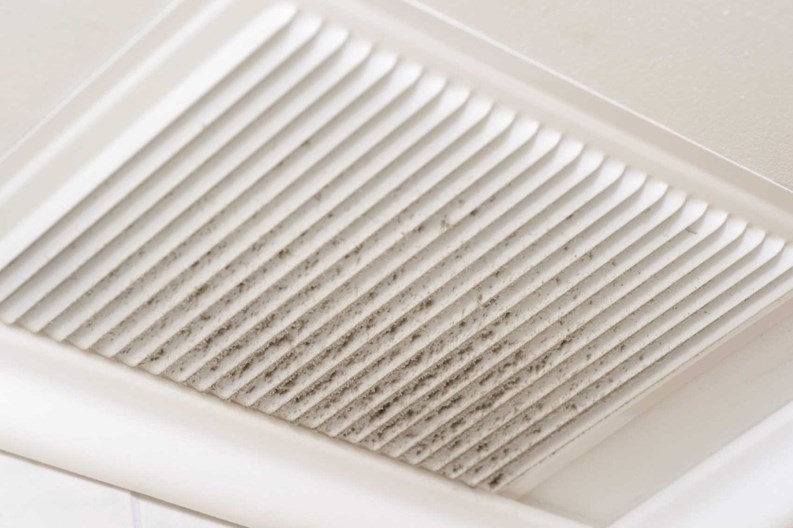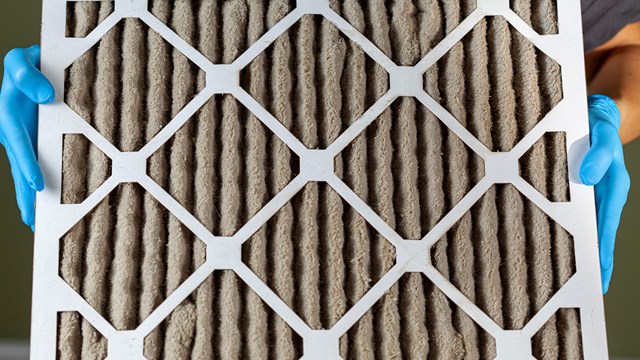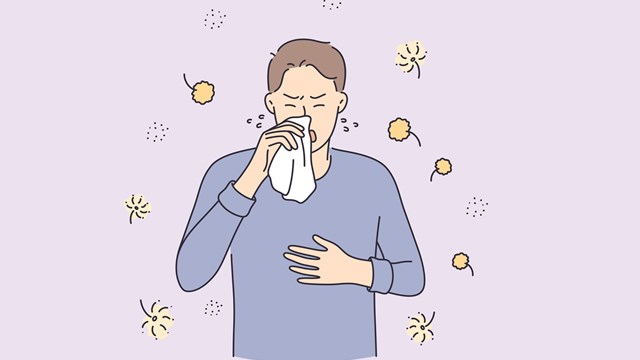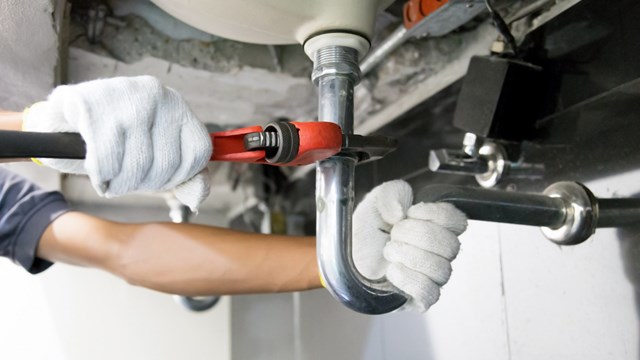The old axiom about things that are out-of-sight also being out-of-mind often goes double when it comes to the inner workings of a building’s operating system. The maze of wires, pipes, and ducts is a mystery to the untrained person or board member, but the truth is that what you don't see can definitely hurt you. And what you don't see in the seemingly endless caverns of a building’s HVAC system, for example, can be surprising—from dead rodents and insects to various forms of potentially dangerous mold.
Since it's easy to determine the cleanliness of common rooms such as garbage and recycling areas, these shared spaces tend to get more attention than hidden vents and ductwork does when it comes to keeping things sanitary. On top of the visibility problem, there are no federal or state guidelines that require a building to have its air ducts cleaned.
According to a recent Harvard study, nearly every home tested for indoor air pollution had at least one air quality concern—and most had more than one. The following facts are not pleasant, but they underscore the potential health issues associated with poor indoor air quality. For example, there are 42,000 dust mites living in every ounce of dust. On average, dust mites leave fecal droppings about 20 times a day. When dust is disturbed and goes airborne, it can be inhaled, causing respiratory and sinus distress, and aggravating pre-existing conditions like asthma and emphysema. This is but one segment of possible pollutants. Add mold spores, pet dander and cigarette smoke to the environment and allergens increase exponentially.
“Indoor air is very different than outdoor air,” says Kristy Lee, technical director of Rockville, Maryland-based Indoor Environment Communications. “Indoor air is not circulating or being refreshed so if there is any kind of problem in a building such as mold or dust or anything like that it becomes an irritant, gets worse and keeps getting circulated throughout the building.”
To be clear, however: the Environmental Protection Agency (EPA) finds that there is not enough current research to determine whether or not air duct cleaning definitively prevents health problems. Additionally, studies have not conclusively demonstrated that particulate levels in homes increase because of dirty air ducts. However, the EPA does state that “it makes no sense to clean duct-work if air handlers are left untouched. Air ducts deliver exactly what an air handler drives, and if the duct-work is dirty, so are the air handler’s guts.”
First Steps
“Air duct cleaning” is a general term because a complete cleaning of an HVAC system means all components of the forced air system. So, often the first step is to understand options. Air duct cleaning, for example, means all duct-work, vents and grilles, essentially only those components that distribute airflow. Conversely, air handler or HVAC cleaning includes all of the heating and cooling machinery, but not the duct-work.
While every region of the country deals with dust and harmful air, areas such as South Florida have another set of issues: most of which center around climate. “We have so much humidity in South Florida that our systems, especially air handlers, will get more condensation which causes the sooner development of micro fungi,” says Omar Pisan, vice president for Ductz of North Fort Lauderdale and Pompano Beach, an air duct cleaning company. “Similarly, systems that are not properly maintained have more problems with condensation on the grilles of the air conditioner and that also leads to fungus and mold.”
A progressive, proactive approach to addressing these issues is encouraged by Ed Hearsey, general manager for ABC Cleaning Inc. in Orlando. “It’s like anything else—if you wait too long the problem gets worse and worse,” he says. “If you begin to see mold around vent covers, you know you have waited too long.”
Finding the right company is an equal challenge as there are many fly-by-night companies known for doing substandard jobs often making matters worse. Pisan, who is certified by the National Air Duct Cleaners Association (NADCA), said that any company without this seal of approval should be considered questionable.
As a way to confront scam artists, NADCA teamed with undercover investigator Chris Hansen and Dateline NBC to expose fraudulent companies. “These scams are a problem for consumers and legitimate businesses alike,” says NADCA executive director John Schulte. “The low-price coupons offered by these bad actors make it difficult for consumers to know what to expect, while also luring business away from legitimate companies. Consumers often end up paying more than necessary without getting their money’s worth.”
And “not getting your money's worth” can extend into health risks, say the pros. An unqualified or inexperienced cleaning company can wind up agitating dust, mold spores, and other irritants, making the problem worse instead of better.
Florida requires a HVAC contractor’s license, mechanical contractor’s license or a sheet metal license. NADCA recommends that commercial consumers ask the following questions: If there is any remediation of mold or other biological contamination does the company have a Ventilation System Mold Remediator (VSMR) on staff? Will the company be assigning an Air Systems Cleaning Specialist (ASCS) to your project that will be responsible for the complete project? Will the contractor provide you with a means to conduct a visual inspection at any time during the cleaning (mirror and flashlight, camera or other remote visual systems)?
“It’s important to know who you are doing business with,” says Hearsey. “Untreated this [mold and dust] can lead to a very serious issue but it just depends on the unit and the environment.” He noted there are other factors specific to Florida that should be taken into consideration. For example, while most of the country uses sheet metal for ducts, the majority of material used for systems in Florida is duct board, a fiberboard material. The older boards are porous, which makes them harder to clean. “It’s much easier to clean metal duct work,” says Hearsey. This is another reason it is recommended to have systems checked on a regular basis.
Proactive Measures
While it is hard for Pisan and Hearsey to place a number on costs for a multiple unit building, Pisan offered that his company’s approach includes a free inspection and estimate. Once the scope of the project is identified, the customer (or board) is presented with the particulars. For example, an average home may cost $500 to $1,000 for a complete cleaning, a process that takes four to six hours and requires two technicians.
“With condominiums and cooperatives, it is harder to determine because there are more variables such as access to units and also addressing the common areas,” says Pisan. “If there were twenty units, the job could probably be done in a week or so.”
For many boards, pulling the trigger and hiring a cleaning company is often a last resort spurred by a resident or employee complaining of illness. Most often a building superintendent or chief engineer will conduct visual reviews of the system. The EPA states that “if after a visual inspection of the inside of the ducts, you see no indication that your air ducts are contaminated with large deposits of dust or mold (no musty odor or visible mold growth), having your air ducts cleaned is probably unnecessary.”
Pisan says that in his experience duct cleaning is a hard sell for board members. Without any significant proof of a problem, they often will not be proactive and call for an inspection though one is recommended annually. The majority of cleaned, maintained systems require cleaning only once every three to five years providing the environment doesn’t change.
“Boards don’t pay for duct cleaning because getting the individual owners to agree is not a small task,” Pisan continues. “Cleaning is not seen as a repair but an option. If an air conditioner breaks down it will be fixed but duct cleaning falls in the middle as it is not a priority but it should be,” Pisan says. “There are positions as to how necessary duct cleaning is but how often are the carpets cleaned?” he asks.
While NADCA does not endorse particular equipment, there are two industry methods that meet NADCA standards. First, vacuums mounted on trucks and trailers, and second, portable units. The former is generally considered more powerful than the latter but the advantage with portable units is accessibility to the duct-work. Both types of equipment will clean to NADCA standards. NADCA notes that “all vacuum units should be attached to a collection device for safe containment prior to disposal. Any vacuum collection device which exhausts indoors must be HEPA (high-efficiency particulate air) filtered.”
While not every building has a garbage chute, this is yet another area that can cause issues over time. Often dangerous bacteria can develop in these areas, which also negatively impacts air quality. Other issues that can result include grease fires, pest problems, rancid food odors and excessive wear-and-tear on the compactor and chute. This type of cleaning requires additional certification as fire retardants are usually involved.
“When it comes to air quality those with allergies or medical conditions will definitely be impacted first,” says Lee. “It all depends on the variables involved. If it’s mold, it depends on what species of mold it is. NADCA has set guidelines and should be contacted with any questions because they have many answers.”
It’s easy to forget or overlook issues that may not necessarily be visible to the naked eye, and for that reason, something like indoor air quality often doesn’t register as a priority until it becomes a problem.
Remember, when air quality doesn’t get the priority it deserves, it can lead to trouble.
Brad King is a freelance writer and a frequent contributor to The South Florida Cooperator.







Leave a Comment